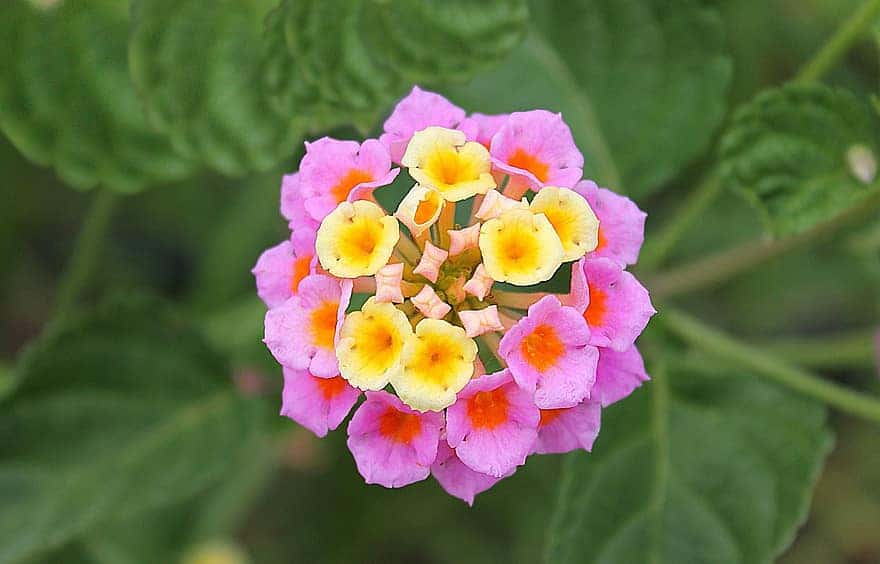There are two best ways on how to root lantana, and they are from cutting and seeds. Much like the proper way of transplanting lantana, your propagated plants’ survival will depend on your correct techniques. The good news is that this perennial is relatively easy to root, and growing your plants in the greenhouse should guarantee that your plants will grow strong from seeds or be vigorous enough to provide cuttings.
Lantanas are one of the best plants that newbies can grow because they embody the traits that leave no room for error on the gardener’s part. These perennials can tolerate drought, heat, and salt and even attract pollinators to ensure a productive garden. In the greenhouse, pollination will be much easier when you plants like lantana since they encourage bees and butterflies that can do the work for you.

How To Root Lantana From Cuttings: The Best Way
Collect cuttings
Start by taking cuttings from the plants that grow newly in spring or those grow in early summer. This is why if you cut back woody stems each spring, you have many opportunities to propagate lantana from cuttings. And remember that for taking the cuttings, the tips should be 4 inches from the stems.
Like the propagation of other plants like mums from cuttings, remove the lower leaves, and only leave those at the cutting top. It’s also worth noting that you can use softwood, hardwood, semi-hardwood, and herbaceous when using cuttings for propagation. Softwood cuttings refer to those you take from young stems, while hardwood cuttings are from dormant plants.
Lantanas work well with softwood tip cuttings where you’ll see a terminal bud. Gather the cuttings in the morning because the plants are well-hydrated during this time. However, you can also root lantana using a basal hardwood cutting if you plan on collecting cuttings in the winter.
You want to use the growth from last season and cut as close to the crown.
Planting
You can use a mixture of peat moss and perlite for planting and put it in a small pot. Moisten the medium and dig a hole in the center at a depth of 2 inches to receive the cutting. Gardeners also recommend coating the lower portion of the cutting with rooting hormone before placing it in the hole.
After planting the cutting, ensure that it stands steadily by firming the starting mix around its base. You can then put your lantana inside a plastic bag and use craft sticks to prevent the bag from contacting the cutting. Since lantanas are generally tough on their own, you can leave the cutting without intervention except when the soil needs watering.
It will take a month or three weeks for the cuttings to root. Once you see the plant growing, you can remove the pot from its bag and put it in the greenhouse’s sunny area. Again, the indoor growing of lantana is more ideal because this will strengthen them until you can transplant the lantanas outdoors.
How To Root Lantana From Seeds
You are probably familiar that some states, especially in the South, consider lantana an invasive species because it spreads aggressively. Lantana’s dropped seeds are the culprit, which is why most gardeners prefer rooting lantanas using cuttings. This will prevent their invasive tendencies because the lantanas that root from cuttings are hybrids that don’t produce seeds.
These sterile lantanas offer various sizes and colors and are even free of berries that are considered toxic. However, if you don’t have existing plants for collecting cuttings, you can start lantanas from seeds and wait for a month or more for germination. The steps are straightforward, and the plants shall survive, given that their environment provides their ideal conditions.
The best way to start lantana seeds is in the greenhouse. Leave them indoors for six to eight weeks before transplanting outdoors to guarantee survival. For planting, soak the seeds to soften their coating and use individual pots with moist starting medium.
You can place one or two seeds at each pot’s center before covering them with ⅛ inch of soil. To protect the plant from direct sunlight, put the pot in a sealed plastic bag, and maintain temperatures between 70 to 75°F. The soil should also stay moist and if more than one seedling grows, clip the undesirable plant to encourage the growth of the stronger one.
Conclusion
Lantanas are one of the best plants to add to your garden or greenhouse not just for aesthetics, but also because they attract beneficial insects. Therefore, you must know how to root lantana either by cuttings or seeds. For the former, you can use both softwood tip cuttings and basal hardwood cuttings.
Softwood tip cuttings are best when you’re collecting either in spring or summer, while basal hardwood cuttings are ideal if you want to collect cuttings when the plants are dormant in the winter. If you’re going to propagate lantanas from seeds, you have to soak them first before putting the pot in a sealed plastic bag. Whichever propagation method you think is more suitable for you, you’ll be pleased to know that lantanas are generally hardy, and success is easy to achieve.
You can also use a greenhouse for growing your plants to ensure their survival by providing and maintaining their ideal conditions.
